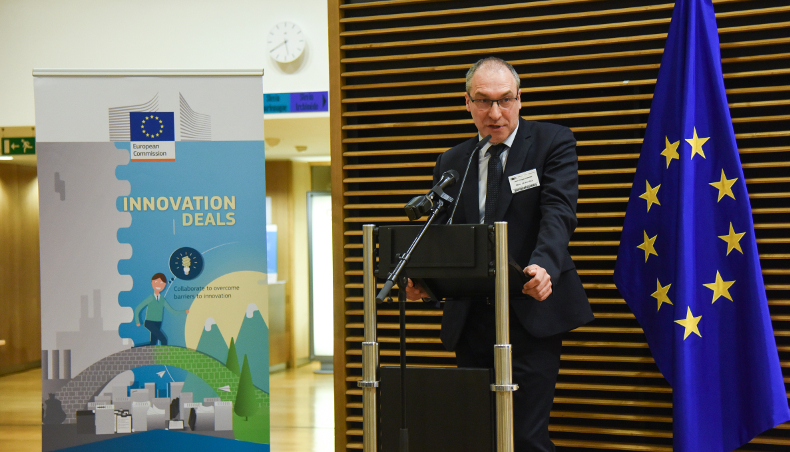
Groupe Renault signed the new Innovation Deal launched by the European Commission on March 12, 2018. Its objective? To encourage the large-scale deployment of the electric vehicle via the circular economy of its battery. How? By creating a regulatory framework conducive to innovation.
Entitled “From E-Mobility to recycling: the virtuous loop of the electric vehicle”, this Innovation Deal is a multidisciplinary working group made up of players in the public and private sector.

Jean-Philippe Hermine, Head of the Environmental Plan.
As demonstrated by Groupe Renault’s more than 150,000 electric vehicles already in circulation around the world, we are committed to a large-scale deployment of 100% electric mobility.
In order to extend the scope of electric mobility, public and private actors must collaborate to improve the regulatory framework applied to the second-life batteries of electric vehicles. The electric vehicle is part of a genuine ecosystem, at the intersection of the fields of mobility and energy, in which digital technologies play a key role.
If the technology of the electric vehicle is already available, the electric mobility ecosystem has barely started to emerge. Many innovations are still needed to make this mobility accessible to as many people as possible and to boost its positive impacts on the environment. For Renault, these futures innovations must have a shared objective: to encourage the circular economy of the electric vehicle battery, the benefits of which are both economic and ecological.
Today, everyone – or almost everyone! – knows that the environmental benefits of the electric vehicle are considerable. But we can do even better, by limiting the carbon footprint of electricity and of the battery. How? Through the circular economy of its battery, of course.
An example? Groupe Renault develops solutions that use the energy storage capacity of electric batteries to promote the production of green electricity. They offset the intermittent natures of renewable energy sources such as solar and wind. The electric vehicle is becoming a key element of the energy transition to affordable and low-carbon electricity.
